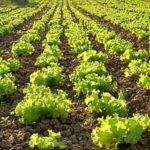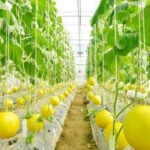Are you interested in creating a sustainable and versatile vegetable garden using repurposed containers? Repurposed container vegetable gardening is a creative and eco-friendly approach to growing your own produce, regardless of limited space or resources.
This method involves utilizing everyday items that are no longer in use, such as buckets, barrels, or even old furniture, to cultivate a bountiful garden. Not only does repurposed container gardening allow for the efficient use of space, but it also promotes environmental sustainability by giving new life to discarded items.
By repurposing containers for vegetable gardening, you can contribute to reducing waste while enjoying the benefits of fresh and organic produce. This introductory section aims to introduce you to the concept of repurposed container vegetable gardening and highlight its numerous advantages. From choosing the right containers and preparing them for planting to selecting the appropriate vegetables and maximizing yields, this article will provide you with valuable insights into starting your own sustainable garden.
In the following sections, we will delve into detail about various aspects of repurposed container vegetable gardening. Whether you are a seasoned gardener looking for innovative techniques or a beginner eager to embark on an eco-friendly journey, this comprehensive guide will offer practical tips and inspiring success stories from those who have embraced this sustainable method.
Join us as we explore the world of repurposed container vegetable gardening and discover how you can transform discarded items into thriving vessels for abundant harvests.
Getting Started
Repurposed container vegetable gardening is a sustainable and eco-friendly way to grow your own produce, even in limited space. Choosing the right containers is an essential step in this gardening method, as it can impact the growth and success of your vegetables.
When repurposing containers for vegetable gardening, there are various options to consider, such as buckets, barrels, crates, pots, and even old tires. Each type of container has its own advantages and considerations when it comes to repurposed container gardening.
When selecting containers for repurposed container vegetable gardening, it’s important to consider the size and material of the containers. Larger containers are suitable for growing deep-rooted vegetables like tomatoes and peppers, while smaller containers are ideal for herbs and leafy greens. Additionally, choosing containers made of non-toxic materials is crucial to ensure the safety of your vegetables. For example, food-grade plastic buckets or wooden crates make excellent choices for repurposed container vegetable gardening.
In a study conducted by Penn State Extension on repurposed container vegetable gardening, it was found that using repurposed containers not only reduces waste but also promotes sustainable living practices. This method allows gardeners to creatively utilize items that would otherwise end up in landfills while producing their own food. By repurposing household items into functional planters, individuals can contribute to environmental conservation while enjoying the benefits of home-grown vegetables.
| Container Type | Suitable Vegetables |
|---|---|
| Food-grade plastic buckets | Tomatoes, peppers |
| Wooden crates | Herbs, lettuce |
| Tires | Potatoes |
Preparing Your Containers
Step-by-Step Guide
Before planting your vegetables in repurposed containers, it is important to properly prepare the containers to ensure optimal growing conditions for your plants. Start by cleaning the containers thoroughly to remove any residue or contaminants that could harm the plants. Next, drill or poke drainage holes in the bottom of the container to prevent water from pooling and causing root rot. Additionally, consider adding a layer of rocks or gravel at the bottom of the container to further enhance drainage.
Once your containers are clean and properly drained, it’s time to fill them with high-quality soil. Use a well-draining potting mix specifically designed for container gardening, as this will provide the necessary nutrients and structure for healthy plant growth. Consider mixing in some organic compost or fertilizer to further enrich the soil and promote robust vegetable growth.
Tips for Ensuring Proper Drainage and Soil Quality
In addition to drilling drainage holes and using quality potting mix, there are other steps you can take to ensure that your repurposed container vegetable garden thrives. Elevating your containers on bricks or blocks can aid in drainage and prevent waterlogging, particularly if your containers do not have proper drainage holes. Furthermore, consider using a saucer or tray beneath each container to catch excess water runoff without exposing your plants’ roots to sitting water.
To maintain healthy soil quality throughout the growing season, consider incorporating organic matter such as compost or worm castings into your containers periodically. This will replenish essential nutrients that may become depleted as your vegetables grow and produce fruits. By taking these steps to prepare your containers effectively, you can set yourself up for a successful and bountiful harvest from your repurposed container vegetable garden.
Selecting the Right Vegetables
When it comes to repurposed container vegetable gardening, selecting the right vegetables is crucial for a successful and bountiful harvest. Not all vegetables are well-suited for container gardening, so it’s important to choose varieties that thrive in limited space and are well-suited for growing in containers. Here are some recommendations for vegetables that are particularly well-suited for this type of gardening:
- Tomatoes: Tomatoes are a popular choice for container gardening due to their versatility and productivity. Look for smaller, determinate varieties that are well-suited for growing in pots.
- Peppers: Both bell peppers and hot peppers can be grown successfully in containers. Choose compact varieties that are suitable for small spaces.
- Herbs: Herbs such as basil, parsley, thyme, and chives are perfect for container gardening. They don’t require a lot of space and can be easily grown on a sunny windowsill or balcony.
- Lettuce and Salad Greens: Leafy greens like lettuce, spinach, and arugula can thrive in containers. They can even be grown indoors during the cooler months.
For those new to repurposed container vegetable gardening, starting with beginner-friendly vegetables is a great way to gain confidence and experience. These vegetables are relatively low-maintenance and forgiving, making them ideal choices for novice gardeners:
- Radishes: Radishes have a quick turnaround time and can be harvested within just a few weeks of planting. They also don’t require a lot of space, making them perfect for small containers.
- Bush Beans: Bush bean varieties are compact and do well in containers. They produce an abundant crop without taking up much space.
- Snap Peas: Snap peas are another easy-to-grow vegetable that thrives in containers. Their vining nature makes them perfect candidates for trellises or vertical gardens.
By selecting the right vegetables for your repurposed container garden, you can ensure a fruitful and rewarding gardening experience while making the most of your limited space.
Whether you have limited outdoor space or simply want to make use of available indoor areas, repurposed container vegetable gardening offers a sustainable solution with numerous benefits. With proper planning and consideration of the types of vegetables best suited for this method, you can enjoy home-grown produce regardless of your living situation or available outdoor area.
Planting and Caring for Your Vegetables
Repurposed container vegetable gardening offers a versatile and sustainable way to grow your own produce, even in limited spaces. Once you have chosen the right containers and prepared them for planting, it’s time to select the vegetables you want to grow and learn how to care for them properly.
When it comes to selecting the right vegetables for your repurposed container garden, there are plenty of options to choose from. Many common vegetables thrive in container gardening, including tomatoes, peppers, lettuce, spinach, carrots, and herbs like basil and parsley. For beginners, it is recommended to start with easy-to-grow vegetables such as lettuce or cherry tomatoes.
Once you have chosen your vegetables, it’s time to plant them in your repurposed containers. Whether you are using seeds or seedlings, make sure to follow the planting instructions specific to each type of vegetable.
Proper watering is essential for container gardening – containers tend to dry out more quickly than traditional garden beds, so regular watering is crucial. Additionally, be mindful of fertilizing your plants and keeping an eye out for any potential pests that may affect your vegetable garden.
| Vegetable | Container Size | Watering Frequency |
|---|---|---|
| Lettuce | 6-8 inches deep | Every other day |
| Tomatoes | 5 gallons or larger | Daily during hot weather |
| Basil | 4-6 inches deep | Regularly but with good drainage |
By following these guidelines and providing proper care for your container-grown vegetables, you can enjoy a bountiful harvest of fresh produce right at home.
Maximizing Space and Yields
When it comes to repurposed container vegetable gardening, one of the key challenges many gardeners face is maximizing space and yields in a limited area. Fortunately, with some strategic planning and clever techniques, it is possible to grow a bountiful variety of vegetables even in small or unconventional spaces. Here are some strategies to help you make the most of your container garden:
- Vertical Gardening: Utilizing vertical space is essential for maximizing yields in a small container garden. Consider using trellises, stakes, or hanging planters to grow vining vegetables such as tomatoes, cucumbers, and pole beans. This not only frees up ground space but also encourages better air circulation and sunlight exposure for your plants.
- Intensive Planting: In a traditional garden setting, plants are typically spaced farther apart to allow for growth and spreading. However, in a repurposed container garden, you can practice intensive planting by placing plants closer together without sacrificing yields. This method ensures that every inch of space is utilized effectively.
- Succession Planting: Rather than planting all your vegetables at once, consider staggered or successive plantings throughout the growing season. As one crop is harvested, replant the same containers with quick-growing vegetables like lettuce, radishes, or spinach. This approach allows you to maximize your harvests and make the most of limited space.
By implementing these space-saving techniques in your repurposed container vegetable gardening efforts, you can enjoy a diverse and abundant harvest even in the smallest of spaces.
In addition to these strategies for optimizing space and yields in a container garden, it’s important to pay attention to proper care and maintenance practices that will contribute to the success of your vegetable crops. From regular watering and fertilizing to monitoring for pests and diseases, taking proactive steps to ensure the health of your plants will ultimately lead to greater yields.
Whether you’re growing vegetables on a balcony, patio, or any other unconventional space using repurposed containers, following these tips will help you achieve impressive results while also embracing sustainable gardening practices that make efficient use of available resources. With creative thinking and careful planning, anyone can create a thriving vegetable garden no matter how limited their outdoor or indoor space may be.
Repurposing Household Items
Are you interested in trying your hand at repurposed container vegetable gardening but don’t want to invest in expensive planters? Look no further than your own household for a wide range of items that can be repurposed as containers for your vegetable garden. Not only is this an environmentally friendly option, but it also adds a creative and unique touch to your garden.
One common household item that can be repurposed for container gardening is the humble plastic bottle. Cut off the top portion of the bottle, make drainage holes in the bottom, fill it with soil, and you have yourself a makeshift planter ready for planting small vegetables or herbs. Large cans and buckets can also be transformed into spacious planters after they’ve outlived their original purpose.
For those who love DIY projects, wooden crates and pallets offer endless possibilities for creating custom planters. By adding a lining and ensuring proper drainage, these repurposed containers become stylish additions to any garden. Additionally, old wheelbarrows, laundry baskets, and even broken furniture pieces can be given new life as unique planters for your vegetables.
The key to successfully repurposing household items as containers for vegetable gardening lies in creativity and practicality. When choosing items to repurpose into planters, consider their size and shape as well as their ability to hold soil and drain water effectively. With a bit of imagination and resourcefulness, you can transform everyday objects into functional and eye-catching containers for your edible garden.
Success Stories and Inspiration
Real-Life Examples
One of the most inspiring aspects of repurposed container vegetable gardening is seeing how others have found creative solutions to grow their own produce in limited space. Take, for example, the story of a city dweller who transformed an old bathtub into a thriving vegetable garden on their urban balcony. By repurposing this unconventional container, they were able to grow a variety of vegetables and herbs, providing themselves with fresh, organic produce just steps away from their kitchen.
Testimonials
Many gardeners who have ventured into repurposed container vegetable gardening have shared their stories and experiences. One gardener remarked that they were surprised by the bountiful harvest of tomatoes they achieved from a collection of repurposed plastic buckets. The versatility of using various containers allowed them to experiment with different vegetables and herbs, leading to a diverse and successful garden.
Innovation in Repurposing
The world of repurposed container vegetable gardening is filled with inventive ideas for utilizing everyday items as planters. From using old dressers and wooden crates to broken wheelbarrows and even discarded rain boots, gardeners have showcased their resourcefulness in turning these items into viable growing spaces for vegetables. These examples serve as motivation for those interested in trying their hand at this sustainable gardening method.
Through real-life examples, testimonials, and innovative ideas for repurposing household items as containers for vegetable gardening, success stories and inspiration abound within the realm of repurposed container vegetable gardening. These stories not only showcase the creativity and resourcefulness of individuals but also demonstrate the potential for anyone to dive into this sustainable gardening method and reap its rewards.
Conclusion
In conclusion, repurposed container vegetable gardening offers a versatile and sustainable approach to cultivating a thriving garden in limited space. By repurposing household items and containers, individuals can reduce waste and minimize their environmental impact while enjoying the rewards of growing their own fresh produce. This method allows for creativity and innovation, as gardeners can think outside the box and find unconventional yet effective ways to repurpose containers for their gardens.
The versatility of repurposed container vegetable gardening also lies in its ability to adapt to various living situations. Whether you have a small urban apartment or a spacious backyard, repurposed container gardening allows individuals to grow their own vegetables regardless of the space available. The sustainability aspect is equally important, as it promotes resourcefulness and reduces the need for new materials, contributing to a more eco-friendly lifestyle.
Aspiring gardeners are encouraged to give repurposed container vegetable gardening a try and share their experiences with others. The satisfaction of growing your own food, the positive environmental impact, and the creative freedom it offers make this method not only practical but also rewarding. So grab some old containers, unleash your creativity, and embark on the journey of repurposed container vegetable gardening – you might just be surprised by what you can achieve.
Frequently Asked Questions
What Can I Do With Old Plant Pots?
Old plant pots can be repurposed in a variety of ways. They can be used for starting seeds, creating rustic garden art, or even as storage containers for gardening tools or supplies. Another option is to donate them to local community gardens or schools.
What Vegetables Work Well in Container Gardens?
Many vegetables thrive in container gardens, including tomatoes, peppers, lettuce, radishes, and herbs like basil and parsley. These compact plants are well-suited for small spaces and can produce a bountiful harvest if provided with proper care and attention.
What Can I Do With Extra Plant Pots?
Extra plant pots can be put to good use by organizing them for future use, using them for craft projects such as making mosaic flowerpots or painted planters, or upcycling them by turning them into bird baths or decorative garden markers. Another option is to find local gardening groups or nurseries that accept donations of old pots for repurposing.

If you’re looking to get into vegetable gardening, or are just looking for some tips on how to make your current garden better, then you’ve come to the right place! My name is Ethel and I have been gardening for years. In this blog, I’m going to share with you some of my best tips on how to create a successful vegetable garden.





